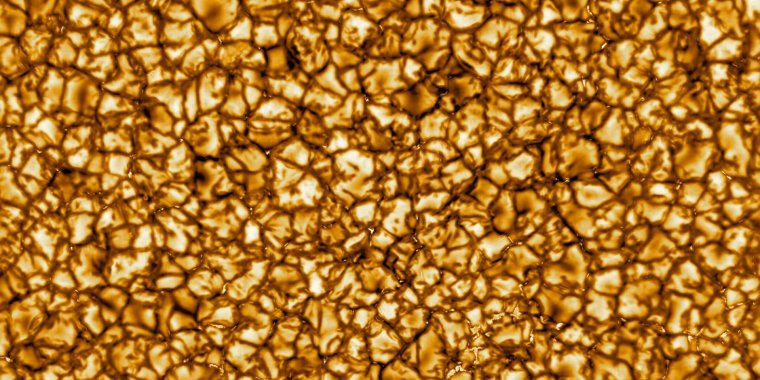| News / Space News |
Newest solar telescope produces first images
Just released first images from the National Science Foundation’s Daniel K. Inouye Solar Telescope reveal unprecedented detail of the sun’s surface and preview the world-class products to come from this preeminent 4-meter solar telescope. NSF’s Inouye Solar Telescope, on the summit of Haleakala, Maui, in Hawai‘i, will enable a new era of solar science and a leap forward in understanding the sun and its impacts on our planet.

The Daniel K. Inouye Solar Telescope produced the highest resolution image of the sun's surface. Credit: NSO/AURA/NSF
Activity on the sun, known as space weather, can affect systems on Earth. Magnetic eruptions on the sun can impact air travel, disrupt satellite communications and bring down power grids, causing long-lasting blackouts and disabling technologies such as GPS.
The first images from NSF’s Inouye Solar Telescope show a close-up view of the sun’s surface, which can provide important detail for scientists.
The images show a pattern of turbulent “boiling” plasma that covers the entire sun. The cell-like structures -- each about the size of Texas -- are the signature of violent motions that transport heat from the inside of the sun to its surface. That hot solar plasma rises in the bright centers of “cells,” cools, then sinks below the surface in dark lanes in a process known as convection.
The sun is our nearest star -- a gigantic nuclear reactor that burns about 5 million tons of hydrogen fuel every second. It has been doing so for about 5 billion years and will continue for the other 4.5 billion years of its lifetime. All that energy radiates into space in every direction, and the tiny fraction that hits Earth makes life possible.
In the 1950s, scientists figured out that a solar wind blows from the sun to the edges of the solar system. They also concluded for the first time that we live inside the atmosphere of this star. But many of the sun’s most vital processes continue to confound scientists.
The motions of the sun’s plasma constantly twist and tangle solar magnetic fields . Twisted magnetic fields can lead to solar storms that can negatively affect our technology-dependent modern lifestyles.
During 2017’s Hurricane Irma, the National Oceanic and Atmospheric Administration reported that a simultaneous space weather event brought down radio communications used by first responders, aviation and maritime channels for eight hours on the day the hurricane made landfall.
Finally resolving these tiny magnetic features is central to what makes the Inouye Solar Telescope unique. It can measure and characterize the sun’s magnetic field in more detail than ever seen before and determine the causes of potentially harmful solar activity. (National Science Foundation)
YOU MAY ALSO LIKE





